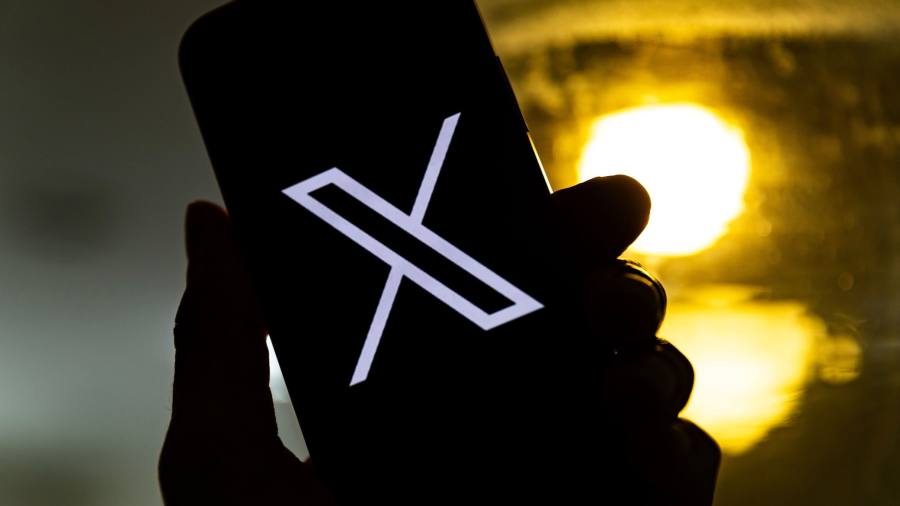Receive free Twitter Inc updates
We’ll send you a myFT Daily Digest email rounding up the latest Twitter Inc news every morning.
Elon Musk’s X Corp has threatened to sue the Center for Countering Digital Hate, which has suggested there has been a rise in hate speech and disinformation on Twitter since the entrepreneur took over the platform.
The CCDH made “inflammatory, outrageous and misleading assertions about Twitter and its operations”, according to a legal letter recently sent by the parent company of the social media network.
“Twitter will employ any and all legal tools at its disposal to prevent false or misleading claims from harming its users, platform, or business,” concludes the letter, which was released by the CCDH on Monday.
Twitter has come under growing pressure since Musk closed his $44bn acquisition of the company in October. The billionaire entrepreneur has slashed the workforce and cut costs, while radical policy changes have frustrated users and marketers, with advertising revenues falling sharply.
Under Musk’s ownership, the company has also threatened to sue Facebook owner Meta alleging it stole the company’s trade secrets when creating its rival messaging app Threads.
Its latest legal letter to the CCDH references research published by the non-profit organisation in June, which reported a proliferation of violating content on Twitter, which was rebranded as X earlier this month.
One piece of research from the CCDH suggests that 99 per cent of 100 accounts, which subscribe to Twitter Blue, a paid service on the network, had posted content that amounted to hate speech.
The methodology included reporting 100 tweets from Twitter Blue accounts and checking to see if they had been removed or actioned four days later. Tweets flagged include alleged racist, homophobic and conspiracy-related comments. More tweets have subsequently been removed, but CCDH said “the majority” remained.
“Advertisers are fleeing his platform for one clear reason: Elon Musk has supported the proliferation of hate and racism on it, and he doesn’t care to stop it,” said Imran Ahmed, chief executive of the CCDH, in a statement.
“Musk is targeting CCDH because we reveal the truth about the spread of hate and disinformation on Twitter under his ownership, and it’s impacting his bottom line.”
However, X Corp’s legal letter alleges the CCDH has “made a series of troubling and baseless claims that appear calculated to harm Twitter generally, and its digital advertising business specifically”.
“CCDH’s claims in this article are false, misleading, or both, and they are not supported by anything that could credibly be called research,” the letter said.
It also alleges that the CCDH is funded by the company’s competitors or foreign governments “in support of an ulterior agenda” without providing further details.
The organisation said it did not accept funding from tech companies, governments, or their affiliates.
In March, Musk acknowledged a “massive decline in advertising” as marketers left the site following his takeover. It has since appointed Linda Yaccarino, a former NBCUniversal advertising head, as chief executive of Twitter. Yaccarino has been on the charm offensive, meeting media partners, publishers and talent agencies and introducing new measures to win back advertisers’ trust.
Twitter recently commissioned a report by software company Sprinklr that suggested that more than 99 per cent of content on the platform was “healthy” and did not violate rules or laws.
The social media company did not immediately respond to a request for comment but Musk tweeted on Monday in response to news coverage of CCDH’s position: “they should save their words for the jury”.
Separately on Monday, Yaccarino made changes to the company’s trust and safety team, expanding some staffers’ roles and announcing new ones in areas such as “global content compliance”, according to an internal email seen by the Financial Times.
According to the email, X is also hiring a global head of “brand safety and suitability” — an advertising industry term referring to the risk that ads appear alongside problematic content and misinformation.
Read the full article here



